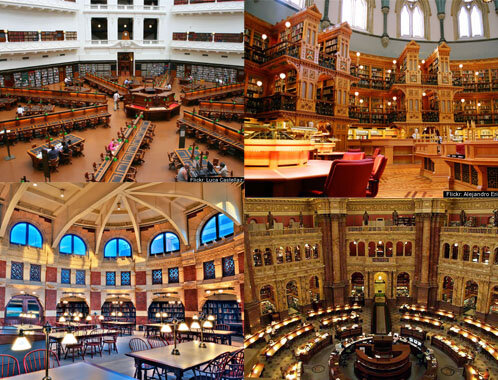As mentioned in the first of this series of posts, the form of most libraries seem to be one of three types - axial, concentric or vertical. The concentric libraries are little panopticon's of knowledge. Standing in the center you see a universe of knowledge all around and most interesting, that knowledge is non-hierarchial. Science, art, literature, etc. all hold equal place in the panorama of books.
Most often the center is occupied by the reading room, but in the Library of Congress, the notably closed stacks have the staff located at the center. The books are prisoners you can talk with at a visitation, but they must be watched at all times. For an official, government library, books are potentially very dangerous.
The Exeter library by Kahn is not concentric circles, but famously subverts the idea of the surrounding books. Rather, you take a book from the stacks and move with it to the light - the ring of tables and carrels on the outer edge of the building.
The Bienecke Rare Book Library at Yale by SOM's Gordon Bunshaft is fascinating and also a reverse of the traditional concentric stack location. The ginormous pile of books, rare and costly treasures, is clearly on display as an almost fetish object. The books are clearly seen but still forbidden in a sense - the inner Miesian glass box is a closed stack for librarian's traffic only. (I am still convinced that at the end of the day, the last librarian out flips a switch and that whole glass box silently lowers into the ground.)


